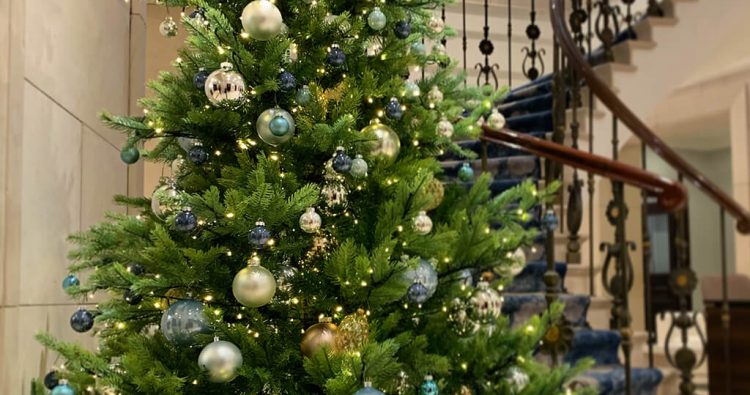
Today, not only homes, but also offices and public spaces are unimaginable without the most important symbol of Christmas: the Christmas tree. But since when are we setting up a Christmas tree, why bother with decorations and why are we using evergreen trees for them?
The Base of the Christmas Tree: Firs and other Evergreens
Christmas trees are traditionally made of firs or pines – but where does this habit come from? Why not use locally available varieties of wood (such as oak or beech) for this purpose? The answer lies in the traditions of ancient cultures.
Numerous archaeological finds prove that evergreen plants have long been respected by many ancient cultures – like Germanic, Roman, Egyptian and Celtic peoples – as symbols of life and survival. Also, the same ancient cultures celebrated the birthday of the sun god – who was Mithras in Roman religion – in December, around the winter solstice. According to myths, Mithras, the god of the rising sun and light, was born on December 25, and the day of his birth was greeted with evergreen branches hung up in the homes of Roman inhabitants. Later, when Christianity became a state religion, this celebration was merged with the day of Jesus’ birth.
Nonetheless, records show that early Christians despised anyone who decorated their homes with evergreens in the middle of winter because the habit was associated with the pagan faith. However, slowly the two festivities and their customs converged, but we had to wait until the Middle Ages when evergreen branches transformed into the pine tree setting we know as the Christmas tree today.
The First Christmas Tree: Martin Luther’s Invention?
Unfortunately, we do not know who set up the first Christmas tree. According to some sources, the origin of the Christmas tree is a popular medieval custom of sacrificing a young life by cutting down a young tree – referring to Christ’s martyrdom. In all likelihood, this custom has blended with the old pagan tradition of selecting the young tree from the pines, in order to celebrate with an evergreen, a symbol of living forever.
According to others, the custom was introduced by Martin Luther, the father of Protestant religion, when he wanted to please his children. In any case, we know for sure that Christmas trees were first planted at the end of the 15th century, in Germany.
Christmas Tree Decorations
The first Christmas trees were decorated mainly with red apples symbolizing the apple of paradise – this symbolism is still recalled today by the popular spherical Christmas tree ornaments. Wafers, gingerbread, sweets and ornaments made of wood and textiles also appeared very soon in the decoration. Trees were lit by candles only for a long time, gradually replaced by electric bulbs in the 20th century. An important element of the Christmas tree – probably as a tradition of the Sun God and the symbolism of light – is sparkle: something that Christmas tree decorators have achieved primarily through glass decorations since the late 19th century. An other symbol is hidden in the tree topper: traditionally, it designates the Bethlehem star.
Christmas Tree Becomes Popular
In the mid-18th century, the tradition of making Christmas trees began to spread massively in Germany and then throughout Europe. The first Christmas tree in Hungary is said to have been set up by the founder of the first Hungarian kindergarten: Teréz Brunszvik, in 1824 – but unfortunately there is no proof of the authenticity of this data. But surely, in the Western world, Christmas tree fashion began to spread rapidly when Queen Victoria set herself a Christmas tree and let herself being photographed underneath it, together with her large family in 1848: she immediately created fashion – across the ocean and beyond. By the 20th Century, the tradition of setting up a Christmas tree was widespread throughout the Christian world, and today there is almost no home where it would not appear.
Variations of the Christmas tree
In Hungary, the Christmas tree must be set up by December 24 and dismantled on January 6 at the Epiphany. In other countries, especially where pine is not available in large numbers – such as in southern Italy – Christmas trees are replaced by mallards and nativity scenes. Orthodox Christians celebrate Christmas Eve on January 6th – setting up a Christmas tree is less important for them, while in the UK and the United States – not least because of commercial considerations – trees are set up in public spaces and shopping malls as soon as in October.
Christmas trees are available today in countless sizes, colors, shapes, and decorations – from beautiful, solid pine trees, full of traditional ornaments, to modern, colorful fake trees that can be our companions for years to come. The possibilities are endless – with some dedication, anyone can create a unique Christmas tree that is both a worthy decoration of the season and will remain in our family’s memory for a long time.
Tune in for the holiday with us! Visit our shops where you will find many Christmas tree decorations, Christmas accessories and plenty of inspiration. We are looking forward to seeing you!